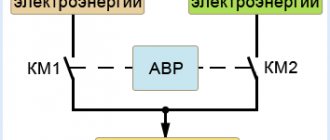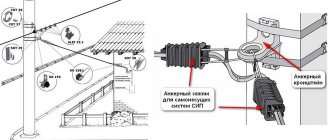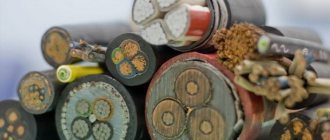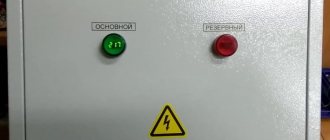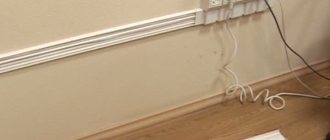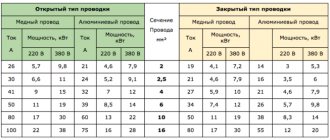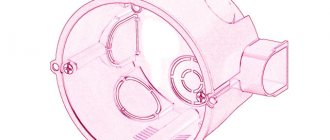It is impossible to imagine the modern world without various electrical appliances. They make our work easier, help automate some processes, and monitor various indicators in real time. The heart of any device is a printed circuit board, with electronic components, connectors and modules located on it, which are susceptible to mechanical stress and the environment. To protect them, a sealed housing is used, and cable glands are used for external sealed connections.
Junction box with connected cable entries
Components
Cable entry components:
- frame,
- spade cable clamp,
- cable gland,
- union nut,
- thread sealer
- counter nut.
Seals provide the necessary degree of protection against the penetration of moisture and solid particles. The union nut secures the cable with a spade clamp. The mating nut is used to clamp the sealed gland onto the device body or simply screw it in if there is a threaded hole in the body.
Why do you need a sealed input?
The cable lead-in is designed for reliable and safe introduction of cable lines into cabinets of electrical apparatus and devices. Its use allows you to achieve the following positive effects:
- The cable insulation is protected from mechanical damage. Due to the sealed lead-in, the wire does not touch the sharp and hard edges of the electrical device. Therefore, damage to its insulation with subsequent short circuit to the walls of the device is excluded.
- The cable entry point into the device body is sealed. The use of a bushing protects the internal parts of the cabinet from dust and dirt.
- Reliable cable fastening. The cable gland allows you to fix the wire using a special clamp. Therefore, the cable will always remain in its proper place.
Entering the power line into the cabinet
Additional Information. If the wire passing through the sealed input is placed in a metal hose, then its minimum angular diameter must be taken into account. The use of corrugation will not allow laying the cable without bending. It is also permissible to use angular sealed leads. Similar products are produced by the foreign company Dielectric, Inc.
Main settings
The main parameter is the cross-section of the clamped cable. There are entries for thin cables (1-3mm) and for large diameter cables (up to 70mm). The next important parameter is the degree of protection against penetration (dust and moisture protection). It happens in the range IP54 (without protection from external influences) - IP68 (protection from jets of water at a depth of 1 meter). The main electromechanical characteristics are: withstand pressure difference, without loss of tightness (usually up to 5 Bar) and operating temperature range (depending on the material of manufacture and the type of pressure seal, it ranges from −60 to +100C)
Cable entry thread type:
- M - Metric thread, standard M12-M63 (but there are series with non-standard thread sizes from M6 to M100
- PG - Inch thread, standard PG7 - PG48
- NPT - Pipe thread, standard 1/2'' to 4''
Main characteristics
The main characteristics of pressure seals are:
- Material of manufacture of the housing, internal seal - modern seals for power and control cable communications are made of metal (steel, brass), plastic (nylon, polyamide). The internal seal is usually made of special vacuum rubber or silicone.
- Color – gray, black, white, silver;
- Type and dimensions of external threads cut on the body - in modern models of cable bushings, three types of threads are used: metric (M), inch (PG) and pipe (NPT). The outer diameter and length of the threaded parts of the housing range from 12 and 9 mm to 90 and 25 mm, respectively.
- Outer diameters of clamping and fixing nuts - the dimensions of the inner and outer nuts range from 19-20 to 75-110 mm.
- Operating temperature range – most cable glands can be operated at temperatures from -40 to +100 0С. Some models are able to withstand a short increase in ambient temperature up to +120 0C.
- Resistance to aggressive chemicals: salty sea water, acids, alkalis, organic solvents and other petroleum products.
- Degree of dust, - and moisture protection (IP).
Glands for cable dimensions
Range
Today, the range of cable glands, glands and sealed glands is extensive and includes hundreds of models and thousands of modifications.
Plastic cable glands
The most common are standard plastic bushings. The material used to manufacture such glands is polyamide 6. The cable gland can also be made of fire-resistant polyamide 6, certified for fire safety class V0-UL94. The cable gland is made of TPV (Thermoplastic vulcanizates), the thread seal is an NBR (Nitrile Butadiene Rubber) rubber ring of round or flat section.
Selection of plastic sealed glands Ortac
Special notches can be made on the inside of the union nut to prevent unscrewing due to vibration loads. Such bushings can provide a high degree of protection up to IP68, protection against oils and alkalis.
Metal cable glands
The design of standard metal bushings does not differ from plastic ones. The housing of the cable gland and union nut is made of metal:
- Nickel-plated brass Grade MS58 (brass 58%, zinc 52%) / MS63 (brass 63%, zinc 37%)
- Stainless steel . The ASIS 300 series is used (Chrome-nickel stainless steel, the most versatile). The ASIS 400 series is also used (stainless steel with a high chromium content - retains its properties in corrosive and sulfur-containing environments, resistant to sudden temperature changes)
Metal cable glands and accessories
Typically, the seals for metal cable glands are NBR and TPV, but there are series of metal glands with silicone seals. As standard, a polyamide 6 spade clamp is used in the metal cable gland.
Thread selection
Cable entries are used to insert cables into the enclosure of electrical equipment. There are two types of input:
- Direct (Figure 1) - when a thread is cut on the shell corresponding to the selected type of cable gland (NPT, PG, M, G) used for “thick-walled” shells, usually thicker than 5 mm.
- Using a locknut (Figure 2) - when a hole is made in the shell, and the cable entry is secured using a locknut on the back side of the shell.
| rice. 1 1 - sheath with thread 2 - Cable entry | rice. 2 1 — shell with hole 2 — Cable entry 3 — Lock nut |
Currently, there are many different designs of cable glands on the market, most of them have imported NPT or PG threads. Since the second type of entry into the shell is the most used, for the consumer the type of thread is not the main determining factor for choosing the type of entry. It is enough to select a hole of the required diameter to switch from one type to another.
The parameters of various types of threads are given in the tables.
Metric ISO 965 (Metric)
Used in Russia and several European countries.
| Type | External thread diameter, D mm | Pitch, P mm | Maximum hole diameter in the shell, mm | |
| M12 | 12 | 1,5 | 12,5 | |
| M16 | 16 | 1,5 | 16,7 | |
| M20 | 20 | 1,5 | 20,7 | |
| M22 | 22 | 1,5 | 22,7 | |
| M25 | 25 | 1,5 | 25,7 | |
| M30 | 30 | 1,5 | 30,7 | |
| M32 | 32 | 1,5 | 32,7 | |
| M42 | 42 | 1,5 | 42,7 | |
| M48 | 48 | 1,5 | 48,7 |
Inch pipe thread conical
NPT ANSI B 1.20.1 - American thread standard
| Type | External thread diameter, mm | Pitch, mm | Maximum hole diameter in the shell, mm | |
| 1/2″ | 21,34 | 1,81 | 22,04 | |
| 3/4″ | 26,67 | 1,81 | 27,37 | |
| 1″ | 33,40 | 2,2 | 34,10 | |
| 1 1/4″ | 42,15 | 2,2 | 42,86 | |
| 1 1/2″ | 48,26 | 2,2 | 48,96 | |
| 2″ | 60,33 | 2,2 | 61,03 | |
| 2 1/2″ | 73,03 | 3,18 | 73,73 | |
| 3″ | 88,90 | 3,18 | 89,60 | |
| 3-1/2″ | 101,60 | 3,18 | 102,60 | |
| 4″ | 114,30 | 3,18 | 115,30 |
PG thread
DIN 40430 German thread standard (not recommended)
On December 31, 1999, VDE 0619, which includes DIN 46319 for metric sizes and DIN 46320 for PG sizes, was withdrawn.
| Type | External thread diameter, mm | Pitch, mm | Maximum hole diameter in the shell, mm | |
| PG7 | 12,5 | 1,27 | 13,2 | |
| PG9 | 15,2 | 1,41 | 15,9 | |
| PG11 | 18,6 | 1,41 | 19,3 | |
| PG13 | 20,4 | 1,41 | 21,1 | |
| PG16 | 22,5 | 1,41 | 23,2 | |
| PG21 | 28,3 | 1,59 | 29,0 | |
| PG29 | 37,0 | 1,59 | 37,7 | |
| PG36 | 47,0 | 1,59 | 47,7 | |
| PG42 | 54,0 | 1,59 | 54,7 | |
| PG48 | 59,3 | 1,59 | 60,0 |
Cylindrical pipe thread
G ISO 228 English standard, widely used in pipe threading
| Type | External thread diameter, mm | Pitch, mm | Maximum hole diameter in the shell, mm | |
| G 1/4 | 13,157 | 1,337 | 13,6 | |
| G 3/8 | 16,662 | 1,337 | 17,1 | |
| G 1/2 | 20,955 | 1,814 | 21,4 | |
| G 3/4 | 26,441 | 1,814 | 26,9 | |
| G 1 | 33,249 | 2,309 | 33,7 | |
| G 1 1/4 | 41,910 | 2,309 | 42,4 | |
| G 1 1/2 | 47,803 | 2,309 | 48,3 | |
| G 2 | 59,614 | 2,309 | 60,1 |
NPT American tapered non-self-sealing pipe thread
according to ANSI B 1.20.1 standard
| Type | Outer thread diameter, mm | Pitch, mm | Maximum hole diameter in the shell, mm | |
| 1/16″ NPT | 7,895 | 0,941 | 6,00 | |
| 1/8″ NPT | 10,242 | 0,941 | 8,25 | |
| 1/4″ NPT | 13,616 | 1,411 | 10,70 | |
| 3/8″ NPT | 17,055 | 1,411 | 14,10 | |
| 1/2″ NPT | 21,223 | 1,814 | 17,40 | |
| 3/4″ NPT | 26,568 | 1,814 | 22,60 | |
| 1" NPT | 33,228 | 2,209 | 28,50 | |
| 1 1/4″ NPT | 41,985 | 2,209 | 37,00 | |
| 1 1/2″ NPT | 48,054 | 2,209 | 43,50 | |
| 2″ NPT | 60,092 | 2,209 | 55,00 |
Cable entry made easy!
Types and types of cable glands
| With a blind rubber band (plastic only) - the cable entry is equipped with a plastic membrane (gasket) and can maintain the tightness of the housing without a pulled cable. To install the cable, you only need to pierce the gasket. | |
| With wire protection (plastic and metal) - inputs with spiral protection of the cable from breaking. The union nut is made with a spiral at the end. These bushings are used in devices subject to vibration loads or mechanical stress for additional protection of the cable from breaking. | |
| Multi-hole (plastic and metal) - used if it is necessary to stretch several wires of small cross-section through the sealed lead-in. The range of wire sections is from 3 to 9 mm. Provide protection - IP65 (dustproof, protected from jets of water) | |
| Flat cable entries (plastic and metal) - used to enter a flat cable into a sealed housing, cable width can be from 13 to 45 mm, height from 7 to 14 mm. Provide protection - IP65 | |
| Flat Nut (Plastic and Metal) - For less demanding applications, there is a range of Flat Nut cable glands available. Without a thread seal, the cable gland provides protection IP54, with a seal - IP65. | |
| With a wire clamp (metal only) - There is also a series of metal cable glands with a clamp. This series can be used to protect the cable from movement due to mechanical stress. | |
| EMC inputs (metal only). — For shielded cables there is a specially developed series of EMC cable glands. This series is designed for electromagnetic shielding of cable input by grounding to the shielding braid of the cable. Grounding is provided by special petals of the sealed lead-in, which reliably clamp the cable braid. | |
| Extra-large cross-section (metal only) - For very large cable cross-sections there is a series of extra-large metal cable glands from M63×1.5 to M90×2.0 | |
| Mini Cable Glands - For applications in confined spaces, the mini series cable glands can be used. The range of series sizes is from M6×1.0 to M12×1.5. The range of cable sections is from 2 to 8 mm. Provides IP68 and can be equipped, in addition to standard ones, with EPDM seals or silicone seals. | |
| Ventilation cable glands - a line of glands for equalizing pressure in sealed housings and protecting against condensation. Models have holes on the body and a hydrophobic membrane inside. Such a design provides air exchange, but does not allow moisture to pass through, thereby maintaining IP68 of the entire device. | |
| Glands with silicone seal (metal only) - are equipped with a silicone gasket, which provides a wider temperature range for the cable gland while maintaining IP68: from −60 to +200 C | |
| Germ-resistant bushings (metal only) are made in accordance with the US Department of Health Directive for “Equipment Use in Medical and Food Equipment.” The design of the inputs makes them difficult to dirty and facilitates cleaning, and a special membrane (TPE) prevents germs and bacteria from entering the device |
Comparison of Roxtec solutions and cable glands
There are five main reasons why Roxtec cable seals are chosen to replace cable glands and clamps.
Space-efficient alternative to cable glands
By replacing cable glands and connectors with Roxtec cable glands, you will have to cut holes in cabinets and enclosures much less often. Use one hole to route 32 cables through a Roxtec entry instead of drilling 32 holes and installing 32 cable glands. By replacing cable glands with Roxtec seals, you can use smaller cabinets and enclosures
This will help free up space for important electrical equipment and avoid unnecessary costs.
Lightweight alternative to cable glands
Cable glands, strain reliefs and similar fasteners can be made from simple plastic. However, they are often made from metals such as steel, brass or aluminum to provide the required performance. The problem with this is that as the number of cable glands increases, the weight of the distribution or junction boxes increases significantly. By replacing all cable glands with one or two Roxtec cable glands, you can immediately reduce the overall weight by 50%.
A simple alternative for cable glands
Traditional cable glands do not accommodate cables with connectors. This increases installation time and increases the chance of human errors. An ideal replacement for cable glands, Roxtec flexible cable glands have large openings through which installers can safely and easily pull connector cables. Use Roxtec seals instead of cable glands to allow installation without cutting and reattaching connectors.
Full featured replacement for cable glands
Roxtec mechanical cable penetrations contain a minimum number of parts, especially compared to traditional cable glands, strain reliefs and clamps. Replace cable glands with Roxtec glands to achieve certified sealing as well as grounding of armored and shielded cables. You'll meet all requirements without having to purchase, ship, and move hundreds of small metal parts into hard-to-reach areas onsite or onsite.
A time-saving alternative to cable glands
Saving time is probably the most convincing argument when deciding to replace cable glands with Roxtec seals. By eliminating the need to punch or drill holes or cut and reattach connectors, you save a lot of time. Another important fact to consider is that if you replace the cable glands with Roxtec seals, all cables can be routed and sealed in one hole, rather than having to route them one by one through dozens of holes. You will soon see that installation time can be cut in half.
| Cabinet size | Weight | Attached connectors | Required Components | Installation time | |
| Roxtec cable glands | 20 cables, 1 cut | 2 kg | No cutting of connectors | 26 components | 2 hours |
| Cable glands | 20 cables, 20 cuts | 4 kg | cutting | 261 components | 4 hours |
Explosion-proof bushings (Ex)
A separate category of metal bushings for use in hazardous areas. The key purpose of a pressure seal in such conditions is not to protect against explosion, as it might seem at first glance, but to prevent the penetration of flammable gases into the device. The sealed lead-in must not allow gas leakage between the seal and the cable sheath. Consists of a housing, a union nut, one or two cable glands, a threaded seal and a counter nut.
Explosion-proof EX bushings and accessories
In Russian practice, explosive zones are divided into several types depending on the presence in this zone of a highly flammable substance or dust, which forms an explosive mixture together with air.
Zone 0 (Zone 20) Explosive gas (dust) is present continuously or for an extended period of time
Zone 1 (Zone 21) - Explosive gas (dust) is not constantly present, but is likely to occur under normal operating conditions
Zone 2 (Zone 22) - Explosive gas (dust) can only appear as a result of equipment errors or breakdowns and is present for a short time
Dimensions of pressure seals
home ⇒ construction mat ⇒ electrical installation
Glands are used to connect and secure cables in various stationary and mobile electrical equipment. The products limit the bending radius of the cable, protecting it from wear or tear, and use special clamps to secure the wire, preventing it from being pulled out of the connector.
In addition, sealed cable glands prevent the penetration of dust and moisture into the cable entry points.
Size grid for PG series plastic samples:
- Thread length: 8 (mm), 9 (mm), 10 (mm), 11 (mm), 12 (mm), 14 (mm), 27 (mm), 28 (mm).
- Cable diameter: from 3 to 50 (mm).
- Diameter of the threaded part of the sealed gland: 11 (mm), 15 (mm), 18 (mm), 20 (mm), 21 (mm), 24 (mm), 27 (mm), 30 (mm), 36 (mm), 46 (mm), 53 (mm), 59 (mm), 74 (mm).
Size grid of plastic samples of the MG series:
- Length of threaded part: 8 (mm), 15 (mm), 18 (mm).
- Cable diameter: from 3 to 44 (mm).
- Diameter of the threaded part of the pressure gland: 12 (mm), 16 (mm), 20 (mm), 25 (mm), 32 (mm), 40 (mm), 50 (mm), 63 (mm).
•
•
Size grid of brass samples of the PGM series:
- Thread length: 7 (mm), 8 (mm), 9 (mm), 10 (mm), 11 (mm), 12 (mm), 13 (mm), 14 (mm), 15 (mm).
- Cable diameter: 3 to 52 (mm
- Diameter of the threaded part of the sealed gland: 12 (mm), 15 (mm), 18 (mm), 20 (mm), 22 (mm), 25 (mm), 28 (mm), 32 (mm), 36.5 (mm), 45.6 (mm), 54 (mm), 59.3 (mm), 72 (mm).
Size grid for brass samples of the M series:
- cables: from 3 to 44 (mm).
- Diameter of the threaded part of the pressure gland: M12x1.5 (mm), M16x1.5 (mm), M20x1.5 (mm), M25x1.5 (mm), M32x1.5 (mm), M40x1.5 (mm), M50x1.5 (mm), M63x1.5 (mm).
Important: all specified cable glands have a degree of protection IP68.
razmery.info
Varieties
- Cable entry for armored wire with double seal
- Cable entry for armored wire with one seal
- Standard cable entry for unarmored wire
- Cable entry for unarmored wire for pipe systems
- Cable entry for armored wire with a flat nut.
To operate bushings in explosion-proof conditions, they must be certified according to international (ATEX standard) and Russian (compliance with technical regulations TR TS 012/2011) requirements.
Main purpose and application
The main purpose of a cable sealed gland is not only protection from mechanical damage during operation and vibration of the outer insulating layer of cable products inserted into electrical cabinets, but also sealing switching and distribution devices from the penetration of moisture and dust.
Another purpose of glands for input is related to their reliable fixation after connection to electrical installations. The fact is that during operation, the wire that is connected to electrical devices or terminal blocks located inside the cabinets must be properly fixed, and it does not matter whether it is a stationary or mobile structure. If you catch a cable with your foot or mobile mechanisms, over time the contact required at the connection point, clamped with a bolt or nut, may be lost. This can cause a shutdown of electrical equipment involved in the technological process, as well as lead to a short circuit or contact of a phase wire, which means voltage on a metal structure that can be touched by a person. The sealed lead-in is used when laying both power and control cables.
Note! When using these cable glands, grounding metal structures that are not at potential during normal operation still remains a mandatory safety condition. This is regulated and specified in the rules for the safe operation of electrical equipment, as well as in the set of rules for the design of electrical installations. Operation without this protective ground is strictly prohibited.
Cable entry accessories
The functionality and capabilities of cable glands can be expanded through the use of various accessories:
- Threaded/cable plug, placed in place of the cable entry in the junction box to cover the hole. Maintains the IP of the device body in the absence of a cable entry. If necessary, it can be quickly dismantled/the plug can be made of polyamide or metal.
- Counter nut with and without collar, polyamide 6
- NBR/TPV O-ring seal
- Reducers and threaded adapters, nickel-plated brass
- For explosion-proof models also used
- Threaded plugs with different heads, for a socket wrench, with a round head for a hexagon, recessed under a hexagon. (brass, nickel-plated brass or stainless steel)
- Threaded adapters and reducers (brass, nickel-plated brass or stainless steel)
- Protective casing, fits over the sealed lead-in for additional protection TPV, PVC, LSF
- Ground contact, for glands for armored cables, MS64 nickel-plated brass or stainless steel
Accessories for cable entries
Sealing methods
To seal the input in a private house or cottage, fire-resistant polyurethane foam is most often used, evenly distributing it in the pipe around the cable. After hardening, the polyurethane foam is cut and partially compacted, pressing it into the pipe. The resulting depression is plastered with cement mortar. An example of such a cable line sealing option is shown in the photo below:
You can also try to use the old-fashioned method: rags cut into thin strips, liquid cement mortar and a piece of rag generously moistened with it are tamped with a wooden stick into the gap between the cable and the pipe.
Another commonly used method is the use of a sealant that fills the unevenness and voids between the hole and the insert sleeve, usually made of fiber cement, metal or plastic. Sealing the cable entry using this method has the advantage that the sealant does not harden, making the entry hole suitable for repair.
In addition, there are specialized professional materials on the market for sealing and production of hermetic bushings. For a sealed passage into a switchboard cabinet or actuator, a sealed cable gland is most often used - a PG gland, shown in the photo below:
A large range of models and different sizes make this solution simple and universal. The collapsible design of the cable gland allows it to be installed in completely different and convenient places for maintenance. At the same time, the presence of a rubber seal and the correctly selected size of the cable and sealed lead-in will allow achieving high levels of tightness, degree of protection IP54-IP68.
It should also be noted that this method of sealing the cable entry is the use of a sealant, which is concreted in the formwork, and a system cover. In appearance, this method of protection looks like this:
There are also specialized seals that allow reliable sealing of the cable entry using heat shrink, inflatable passages, gloves, etc. All these devices, as a rule, are imported, so the cost of this method of protection is quite high. In this case, it is more rational to consider simple, but effective and time-tested options.
The video below clearly shows several methods of how to seal the place where a cable line is inserted into a building or well:
So we looked at ways to seal cable entries. As you can see, there are quite a lot of effective options for protecting vulnerable spots from moisture. We hope the information provided was useful and interesting for you! If you have any questions, you can always contact an electrician!
We also recommend reading:
- How to connect wires in a junction box
- How to protect LED strip from moisture
- How to conduct electrical wiring in pipes
Design features
Cable tray
The cable gland is a structure consisting of:
- clamping and locking nuts acting as a lock;
- seals – for sealing cabinets in harmful, dusty and humid conditions;
- gear coupling, which additionally holds the cable for installation and operation.
The gland for laying cables inside electrical cabinets with a tightening mechanism consists of a set of individual elements, each of which has its own specific function
It is important to know! There are simpler and cheaper designs made of rubber and without a reliable bolt clamping mechanism. They are also called seals and serve to seal distribution cabinets. However, this mechanism inserted into the switchgear is unlikely to be able to fix the wire. They are more versatile and do not require much time to install. For them, when carrying out installation work and introducing the cable, you only need to cut a hole of the required diameter with a knife or a sharp object and insert the cable.
There are simplified types of pressure seals that are used in domestic conditions

